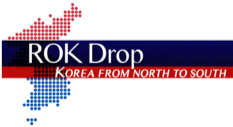Operation Trudy Jackson – Focus on Incheon Part 4
The Incheon Landing Operation on September 15, 1950 is recognized as one of the greatest military amphibious landings ever. However, a key to the success of the landing operation was provided by critical intelligence provided by a joint CIA-Naval team in the days before the Incheon Landing.
One week before the landing at Incheon, the joint CIA-military team launched Operation “Trudy Jackson”. The CIA-Navy sent in a tough commando unit led by Navy Lt. Eugene Clark. His guerrila group included an Army captain, three enlisted soldiers and two Korean operatives from the 8th Army G2 intelligence section (some would say they were actually hired gangsters).
They first landed on Yonghung-do Island, ten miles from Inchon. Clark subdued the small North Korean garrison on Yonghung-do and armed the anti-communist villagers on the island who agreed to help him. From here, Clark’s mission was to scout the tides, mud-flats, and seawalls before the Incheon landing occurred. What time does the tide go in and out? Can the naval AMTRACs or even tanks drive in the mud? Was the beach wired? How high are the seawalls? What size of ladders do the soldiers need? Where can tanks off load at? These are some of the critical questions he was tasked to find out. He was also responsible for spotting the location of any enemy mines when the tide went down across the bay leaving the mud flats Incheon is famous for. The sinking of a US ship due to a mine could block the entrance into the harbor, thus stopping the entire invasion. In addition, the commando unit was even able to recon Wolmi-do and routes to Seoul using their Korean recruits who infiltrated those areas providing further intelligence information before the invasion to MacArthur.

Navy Lt. Eugene Clark is pictured to the far right with members of the Yonghung-do operation.
However, the North Koreans found out the guerillas were on the Yonghung-do island and sent an assault boat with 16 North Korean soldiers, but Clark was tipped off to their impending arrivial ambushed them with a .50 cal machine gun on a sampan, and killed them all. Now that his cover had been blown Clark moved off the island to secure the lighthouse on Palmi-do Island which was his final objective before the start of the invasion. The lighthouse would provide a critical navigation aid for the invasion force. The commando team subdued another small garrison on the island and then worked to get the lighthouse operational. It was night time and the control to the lighthouse was missing a critical part that would make the lighthouse operational. The team members searched the lighthouse in the dark for the part with no success. One of the Korean commandos thinking failure was imminent layed down on the floor in exhaustion and his hand fell right on the missing part. He immediately jumped up and gave it to Clark who was able to turn on the lighthouse. His final mission was accomplished and the invasion force arrived safely through the channel that night and the next morning invaded Incheon destroying the North Korean forces occupying the city and changing the course of the war.
 A tragedy of the commando mission however, was when Clark’s commando team moved to Palmi-do, the communists came back with a larger force unopposed to Yonghung-do island and lined up the 50 friendly South Korean villagers who had helped Clark, and gunned them all down.
A tragedy of the commando mission however, was when Clark’s commando team moved to Palmi-do, the communists came back with a larger force unopposed to Yonghung-do island and lined up the 50 friendly South Korean villagers who had helped Clark, and gunned them all down.
For his actions at Incheon, Navy Lt. Eugene Clark was awared both the Silver Star and the Legion of Merit. However, his story would remain unknown until 1998 when he died and his family found his memoirs of the war written in 1998 stored in a safe. His memoirs would eventually be published in a 2002 book, The Secrets of Inchon”.


Your post brought back a memory. In the early 1960's I remember reading something about this team's exploits in a obscure paperback history of the US Navy, written by a Navy veteran of WWII. Can't remember the exact name of the author or title now, I still have the threadbare copy but unfortunately not at my current location.
I'm sure this author used a lot of secondary sources, so somebody must have known of this mission and written about it, in accounts more contemporaneous (1950's). Probably of course such accounts wouldn't have had the full details you cite from the memoirs.